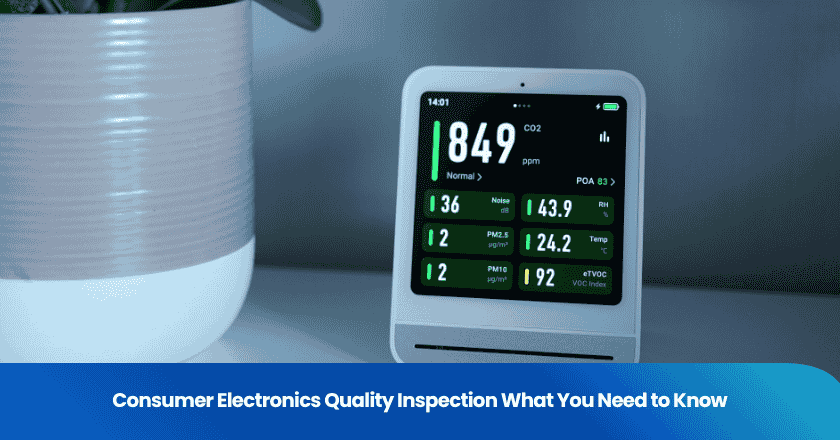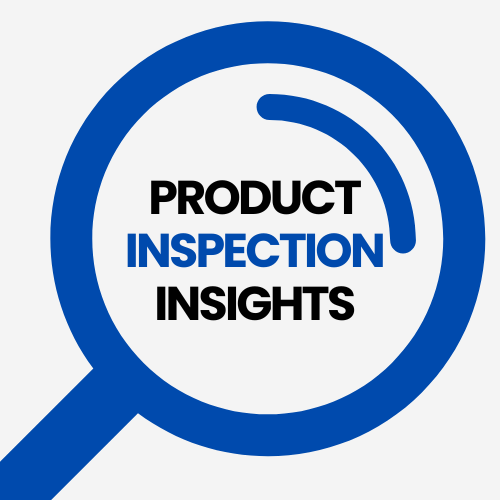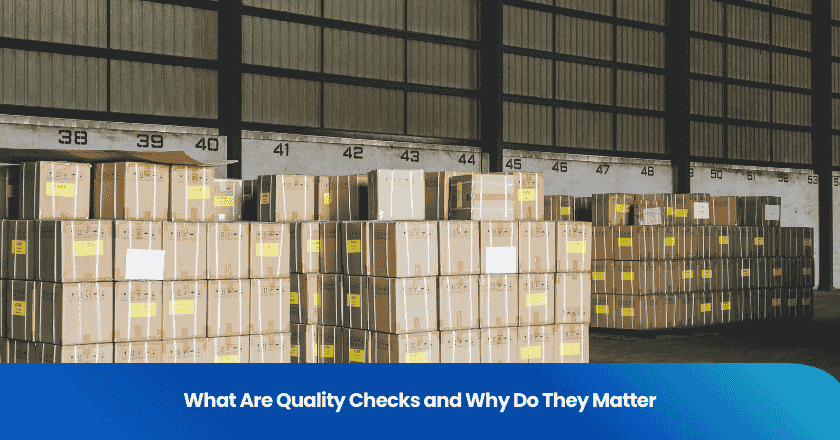
Consumer electronics quality inspection refers to the process where you measure, examine, and test electronic products to ensure they meet established standards. Quality inspection matters because it protects you as a consumer and helps manufacturers deliver reliable products. When experts inspect electronics, they find issues that could affect safety or performance. You benefit from safer devices and greater satisfaction.
Consider inspection as a key factor when you choose, use, or produce electronic devices.
Key Takeaways
- Consumer electronics quality inspection ensures that devices meet safety and performance standards, protecting you from potential hazards.
- Regular inspections throughout the production process help manufacturers catch defects early, leading to fewer faulty products and lower costs.
- Compliance with international regulations is crucial; quality inspections verify that products adhere to legal standards, preventing recalls and ensuring safety.
- Trust in a brand grows when quality inspections are prioritized, resulting in higher customer satisfaction and loyalty.
- Utilizing automated inspection methods increases accuracy and efficiency, helping manufacturers deliver reliable electronics consistently.
Consumer Electronics Quality Inspection
Definition
You encounter consumer electronics quality inspection every time you buy or use a device. This process measures, examines, and tests products to confirm they meet strict standards.
Quality inspection involves activities such as testing, gauging, examining, or measuring one or more product characteristics. However, inspection efforts end when the results are compared with specified requirements to determine whether the inspected characteristic achieves conformity.
Industry experts define consumer electronics quality inspection as a series of evaluations, not a single action. You see inspections at different stages, from raw material checks to final product reviews.
- Electronic quality control is a systematically designed process to ensure compliance with quality standards.
- It encompasses all aspects of production, from raw material procurement to final delivery.
- The process includes meticulous testing, thorough inspection, and rigorous compliance verification.
You rely on these inspections to guarantee that every device performs as expected. Manufacturers use consumer electronics quality inspection to catch defects early and maintain consistency. You benefit from safer, more reliable products.
Purpose
You need consumer electronics quality inspection to protect your interests and ensure product reliability. The purpose goes beyond finding defects. You use inspections to verify that products meet performance criteria and safety regulations.
Manufacturers conduct consumer electronics quality inspection to maintain high standards and avoid costly recalls. You expect devices to function correctly and last longer.
Inspections serve several important functions:
- Collect information about product performance against established standards.
- Correct poor quality in manufactured products to maintain standards.
- Enhance reputation by delivering high-quality products.
- Identify sources of failure in finished products.
You see different types of inspections throughout the production cycle.
You depend on consumer electronics quality inspection to confirm that every stage of production meets requirements. This process helps you avoid unsafe or unreliable devices. Manufacturers use inspections to build trust and deliver products that meet your expectations.
Importance of Quality Inspection
Safety
You rely on consumer electronics every day, from smartphones to home appliances. Safety stands as the most critical reason for quality inspection. When you use a device, you expect it to operate without causing harm. Quality inspection identifies potential hazards, such as electrical faults or overheating, before products reach your hands. Inspections catch defects that could lead to fires, electric shocks, or malfunctions. By detecting these issues early, manufacturers protect you and your family from accidents.
Note: Quality inspection acts as your first line of defense against unsafe products. Regular inspections ensure that only devices meeting strict safety standards enter the market.
Compliance
You need assurance that your devices meet international and regional regulations. Compliance with these standards is not optional; it is a legal requirement. Quality inspection verifies that products follow the rules set by authorities. This process helps you avoid products that could be banned or recalled due to non-compliance.
Manufacturers must navigate a complex landscape of regulations. The following table highlights key compliance standards relevant to consumer electronics:
| Compliance Standard | Description | Applicability |
|---|---|---|
| RoHS Directive | Restricts hazardous substances in electrical and electronic equipment | Manufacturers, importers, distributors in the EU |
| Low Voltage Directive (LVD) | Addresses health and safety risks in electrical equipment | Consumer and professional electrical devices |
| EMC Directive | Limits electromagnetic emissions to prevent interference | Manufacturers and distributors of electronic products |
| Radio Equipment Directive (RED) | Ensures safety and efficient use of the radio spectrum | Manufacturers and importers of radio and telecommunications equipment |
| EU Cyber Resilience Act | Protects against cybersecurity threats | Developers and manufacturers of hardware and software with digital elements |
| General Product Safety Directive (GPSD) | Obligates manufacturers to provide safe products | All manufacturers of consumer products |
You see that Europe leads the way in enforcing these standards. The region's strict regulations on e-waste and energy efficiency shape how products are designed and manufactured. In 2024, European consumers demand repairable electronics and transparency in sourcing, which drives higher compliance rates.
Trust
You want to trust the devices you buy. Quality inspection builds this trust by ensuring consistent product quality. When you receive a device that works as promised, you feel confident in your purchase. Inspections help manufacturers maintain a strong reputation by delivering reliable products.
Manufacturers measure the impact of quality inspection on brand reputation through several key points:
| Key Point | Explanation |
|---|---|
| Consistent Product Quality | Essential for maintaining customer trust and loyalty. |
| Track Record of High Quality | Enhances brand reputation and fosters customer loyalty. |
| Poor Quality Impact | Can lead to reputational damage and loss of customer trust. |
You benefit from a company’s commitment to quality control. A strong track record of high-quality products leads to enhanced reputation and customer loyalty. When manufacturers prevent defects through regular inspections, they avoid the negative effects of poor quality.
- You experience greater satisfaction with products that meet your expectations.
- You see fewer returns and complaints, which saves you time and frustration.
- You develop loyalty to brands that consistently deliver reliable electronics.
Quality inspection, when performed at every stage, ensures that you receive safe, compliant, and trustworthy products. Inspections protect you from harm, guarantee adherence to regulations, and foster long-term trust in the electronics you use every day.
Types of Quality Inspection
Quality inspection systems play a vital role in consumer electronics manufacturing. You encounter several types of inspections throughout the production process. Each type helps you verify that components and finished products meet specifications and performance criteria.
Incoming Inspection
You start with incoming inspection. This step checks the quality of raw materials and components before production begins. You look for damage, confirm that parts match specifications, and review documents. Sampling plans help you decide which items to inspect. Incoming inspection prevents defective materials from entering the production line.
Tip: Early detection of defects at this stage saves time and reduces costs later.
In-Process Inspection
You use in-process inspection to monitor quality during production. Visual checks, first piece inspection, and process audits help you catch defects early. This inspection maintains process stability and ensures that products continue to meet standards.
Quality inspection systems at this stage allow you to adjust processes quickly if you find problems.
Final Inspection
You rely on final inspection to confirm that finished products meet all requirements before delivery. Functional testing, visual checks, and documentation review ensure only conforming products reach customers.
Final inspection acts as your last opportunity to catch any defect before shipment.
Sampling
You use sampling when inspecting every item is not practical. Sampling allows you to check a portion of products or components based on a plan. You consider factors such as product application, applicable standards, destination markets, component type, failure modes, cost versus benefit, and previous experience.
Note: Sampling helps you balance thoroughness and efficiency in quality control.
- Product application
- Applicable standards
- Destination markets
- Component type
- Failure modes
- Cost vs. benefit
- Previous experience
Quality inspection systems combine these methods to help you detect defects, maintain high standards, and deliver reliable electronics. You benefit from inspections that verify every stage of production meets specifications and performance criteria.
Quality Inspection Process
Methods
You encounter several advanced methods during the quality inspection process in consumer electronics manufacturing. Automated Optical Inspection (AOI) uses high-resolution cameras to detect defects in printed circuit boards. In-Circuit Testing (ICT) checks the electrical performance of components, ensuring each part functions as intended. Solder Paste Inspection (SPI) verifies the quality of solder paste before placing components, which helps prevent connection issues.
You also benefit from other inspection methods:
- AXI (Automated X-ray Inspection) identifies hidden solder joints that visual checks might miss.
- FCT (Functional Circuit Testing) tests the real-world performance of circuits.
- Flying Probe Test offers flexibility for prototypes and small batches.
Automated systems deliver higher detection accuracy and efficiency compared to manual inspections. The table below highlights key differences:
| Method | Detection Accuracy | False Positives | Scalability |
|---|---|---|---|
| Manual Inspection | Up to 85% | 35% | Limited |
| Automated Systems | 99%+ | Reduced | High (real-time) |
Automated inspections provide consistent results and support large-scale production. Manual inspections may suffer from fatigue and inconsistency, especially in high-volume environments.
Standards
You must follow strict standards during the inspection process to ensure quality control. International standards like ISO/IEC 17020 guide you through the steps needed for compliance. You start by familiarizing your team with requirements, then conduct a gap analysis to identify areas needing improvement. You implement changes, train staff, and perform internal audits to assess readiness. Applying for accreditation with a recognized body confirms your commitment to quality.
Manufacturers establish systems that maintain consistency, safety, and quality across all production stages. Regular audits and staff training help you meet these standards and avoid non-compliance.
Reporting
You rely on clear and accurate reporting to track the results of inspections. Best practices include:
1. Establishing clear inspection criteria so everyone understands the objectives.
2. Implementing standard operating procedures (SOPs) to maintain consistency.
3. Using qualified inspectors to reduce errors.
4. Maintaining thorough documentation to monitor results and identify areas for improvement.
Inspection reports influence decision-making in electronics manufacturing.
The table below shows how reports support quality control:
| Key Point | Description |
|---|---|
| Quality Records | Provide detailed records of quality assurance evaluations. |
| Root Cause Analysis | Enable analysis for identified issues. |
| Corrective Actions | Facilitate timely actions to address discrepancies. |
| Compliance | Help maintain regulatory and quality standards. |
| Product Quality | Influence product quality and operational efficiency. |
You use inspection reports to track defect types, analyze data, and make informed decisions. These reports help you improve supplier relationships and ensure products meet quality metrics before release.
Benefits
Fewer Defects
You benefit from fewer defects when you prioritize quality inspection in consumer electronics manufacturing. Prevention strategies play a key role in reducing the number of faulty products. By identifying and eliminating the conditions that create defects before they occur, you avoid costly rework and warranty claims.
- Prevention strategies significantly reduce defect rates by addressing issues early.
- A company with a 3% defect rate on 10,000 units each month faces major costs from repairs and returns.
- World-class manufacturers spend less than 5% of total sales on quality, while less advanced companies may spend over 20%. This shows that investing in prevention leads to fewer defects and lower costs.
You see that effective defect detection at every stage of production helps maintain high standards and protects your bottom line.
Better Performance
You expect your devices to work reliably and consistently. Rigorous quality inspection leads to better performance in consumer electronics. Manufacturers use several methods to measure and improve product reliability and lifespan.
You benefit from reliability analysis, root cause analysis, and quality control measures. These methods focus on eliminating disruptions, minimizing downtime, and maximizing the lifespan of your devices. By maintaining strict control throughout the process, you receive products that last longer and perform better.
Customer Loyalty
You value products that meet your expectations. When you receive high-quality electronics, your satisfaction increases, and you are more likely to remain loyal to the brand. Organizations that implement stricter quality inspection protocols see a direct improvement in customer satisfaction and loyalty.
- Stricter inspection leads to higher quality products.
- Higher quality results in increased customer satisfaction and loyalty.
- Companies that focus on quality inspection experience fewer returns and stronger customer relationships.
You notice that your trust grows when you consistently receive reliable products. This loyalty benefits both you and the manufacturer, creating a positive cycle of quality and satisfaction.
You recognize that consumer electronics quality inspection is essential for reliability, safety, and competitive advantage. Manufacturers protect their reputation and reduce costs by preventing defects and verifying components through rigorous quality assurance. You can check for testing stages such as design verification, production process, and market supervision before making a purchase.
Tip: Maintain ongoing attention to quality by using structured workflows, AI-powered systems, and regular compliance testing.
FAQ
What is the main goal of consumer electronics quality inspection?
You use quality inspection to confirm that electronic products meet safety, reliability, and regulatory standards. This process helps you avoid defective devices and ensures consistent performance.
How often should you perform quality inspections during production?
You should conduct inspections at every critical stage, including incoming materials, in-process checks, and final product reviews. Regular inspections help you maintain high standards and catch defects early.
What tools or systems improve the inspection process?
You benefit from automated systems, such as quality inspection software, which increases accuracy and efficiency. These tools help you track results, analyze data, and streamline reporting.
Why is sampling important in quality inspection?
You use sampling to inspect a portion of products when checking every item is impractical. Sampling helps you balance thoroughness and efficiency, especially in large-scale manufacturing.
How do inspection reports support decision-making?
You rely on inspection reports to identify trends, track defects, and guide corrective actions. Clear documentation helps you improve processes and maintain compliance with industry standards.
Grow your business with TradeAider Service
Click the button below to directly enter the TradeAider Service System. The simple steps from booking and payment to receiving reports are easy to operate.




